
The Garden of Earthly Delights, right panel. Oil on oak panels. Hieronymus Bosch. Museo del Prado, Madrid. Circa 1500. Via Wikimedia.
See The Garden of Earthly Delights by Hieronymus Bosch

The Garden of Earthly Delights, right panel. Oil on oak panels. Hieronymus Bosch. Museo del Prado, Madrid. Circa 1500. Via Wikimedia.

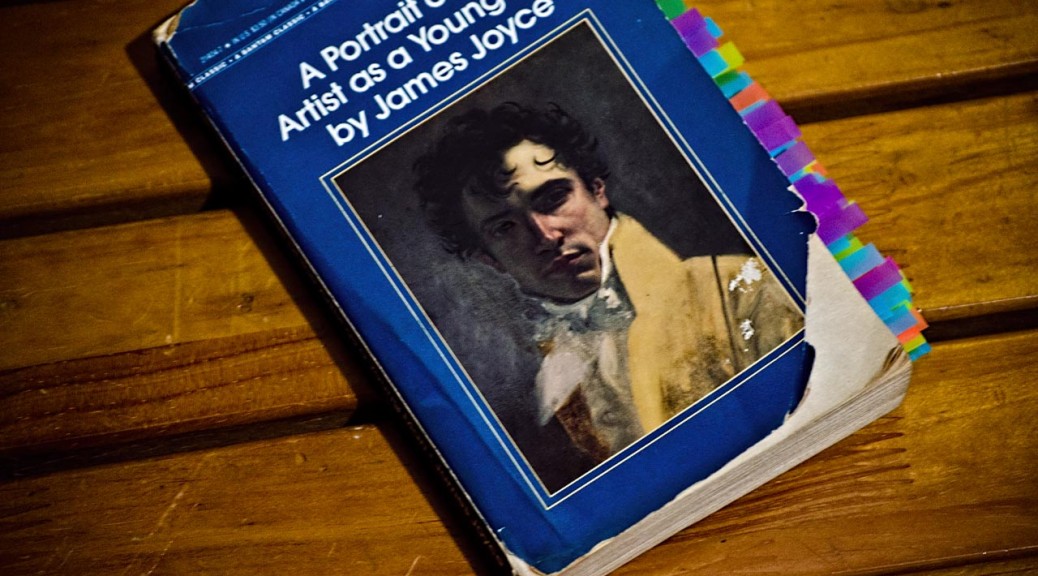
—
“-Pity is the feeling which arrests the mind in the presence of whatsoever is grave and constant in human sufferings and unites it with the human sufferer.” p. 198
“-The tragic emotion, in fact, is a face looking two ways, towards terror and towards pity, both of which are phases of it. You see I use the word arrest. I mean that the tragic emotion is static. Or rather the dramatic emotion is. The feelings excited by improper art are kinetic, desire and loathing. Desire urges us to possess, to go to something; loathing urges us to abandon, to go from something. The arts which excite them, pornographical or didactic, are therefore improper arts. The esthetic emotion (I use the general term) is therefore static. The mind is arrested and raised above desire and loathing.-” p. 199
“The long slender flattened skull beneath the long pointed cap brought before Stephen’s mind the image of a hooded reptile. The eyes, too, were reptilelike in glint and gaze. Yet at that instant, humbled and alert in their look, they were lit by one tiny human point, the window of a shrivelled soul, poignant and self-enbittered.” p. 200
“Beauty expressed by the artist cannot awaken in us an emotion which is kinetic or a sensation which is purely physical. It awakens, or ought to awaken, or induces, or ought to induce, an esthetic stasis, an ideal pity or an ideal terror, a stasis called forth, prolonged and at last dissolved by what I call the rhythm of beauty.-” p. 200
“-Art-said Stephen-is the human disposition of sensible or intelligible matter for an esthetic end.” p. 201
“-Aquinas-said Stephen-says that is beautiful the apprehension of which pleases.-
Lynch nodded.
-I remember that-he said-Pulcra sunt quae visa placent.-” p. 201
“-Static therefore-said Stephen-Plato, I believe, said that beauty is the splendour of truth. I don’t think that it has meaning but the true and the beautiful are akin. Truth is beheld by the intellect which is appeased by the most satisfying relations of the intelligible; beauty is beheld by the imagination which is appeased by the most satisfying relations of the sensible. The first step in the direction of truth is to understand the frame and scope of the intellect itself, to comprehend the act itself of intellection. Aristotle’s entire system of philosophy rests upon his book of psychology and that, I think, rests on his statement that the same attribute cannot at the same time and in the same connexion belong to and not belong to the same subject. The first step in the direction of beauty is to understand the frame and scope of the imagination, to comprehend the act itself of esthetic apprehension.” p. 202
“though the same object may not seem beautiful to all people, all people who admire a beautiful object find in it certain relations which satisfy and coincide with the stages themselves of all esthetic apprehension. These relations of the sensible, visible to you through one form and to me through another, must be therefore the necessary qualities of beauty.” p. 203

An altarpiece in Ascoli Piceno, Italy, by Carlo Crivelli (circa 1435–circa 1495) – The Yorck Project: 10.000 Meisterwerke der Malerei. Via Wikimedia.
****”Aquinas says: Ad pulcritudinem tria requiruntur integritas, consonanita, claritas. I translate it so: Three things are needed for beauty, wholeness, harmony and radiance. Do these correspond to the phases of apprehension? … You see it as one whole. You apprehend its wholeness. That is integritas… You apprehend it as complex, multiple, divisible, separable, made up of its parts, the result of its parts and their sum, harmonious. That is consonantia… he had in mind symbolism or idealism, the supreme quality of beauty being a light from some other world, the idea of which the matter was but the shadow, the reality of which it was but the symbol. I thought he might mean that claritas was the artistic discovery and representation of the divine purpose in anything or a force of generalization which would make the esthetic image a universal one, make it outshine its proper conditions… The radiance of which he speaks in the scholastic quidditas, the whatness of a thing. This supreme quality is felt by the artist when the esthetic image is first conceived in his imagination. The mind in that mysterious instant Shelley likened beautifully to a fading coal. The instant wherein that supreme quality of beauty, the clear radiance of the esthetic image, is apprehended luminously by the mind which has been arrested by its wholeness and fascinated by its harmony is the luminous silent stasis of esthetic please, a spiritual state very like to that cardiac condition which the Italian physiologist Luigi Galvani, using a phrase almost as beautiful as Shelley’s, called the enchantment of the heart.-” p. 206-207
***”These forms are: the lyrical form, the form wherein the artist presents his image in immediate relation to himself; the epical form, the form wherein he presents his image in mediate relation to himself and to other; the dramatic form, the form wherein he presents his image in immediate relation to other.-” p. 208
“Here are some questions I set myself: Is a chair finely made tragic or comic? Is the portrait of Mona Lisa good if I desire to see it? Is the bust of Sir Philip Crampton lyrical, epical or dramatic? If not, why not?-
-Why not, indeed?-said Lynch, laughing.”
“The simplest epical form is seen emerging out of lyrical literature when the artist prolongs and broods upon himself as the centre of an epical event and this form progresses till the centre of emotional gravity is quidistant from the artist himself and from others. The narratice is no longer purely personal. The personality of the artist passes into the narration itself, flowing round and round the persons and the action like a vital sea. This progress you will see easily in that old English ballad Turpon Hero, which begins in the first person and ends in the third person. The dramatic form is reached when the vitality which has flowed and eddied round each person fills every personal with such vital force that he or she assumes a proper and intangible esthetic life. The personality of the artist, as first a cry or a cadence or a mood and then a fluid and lambent narrative, finally refines itself out of existence, impersonalizes itself, so to speak. The esthetic image in the dramatic form is life purified in and reprojected from the human imagination. The mystery of esthetic like that of material creation is accomplished. The artist, like the God of creation, remains within or behind or beyond or above his handiwork, invisible, refined out of existence, indifferent, paring his fingernails.-” p. 208-209
“A fine rain began to fall from the high veiled sky and they turned into the duke’s lawn, to teach the national library before the shower came… ‘No wonder the artist retired within or behind his handiwork after having perpetrated this country.-” p. 209

On Edward Hopper by Mark Strand from The New York Review of Books | Article
“something that is not there at the outset but reveals itself slowly, and then completely, having traveled an arduous route during which vision and image come together,”
“By the time the gas station appears on canvas in its final form it has ceased being just a gas station. It has become Hopperized. It possesses something it never had before Hopper saw it as a possible subject for his painting. And for the artist, the painting exists, in part, as a mode of encountering himself.”
“With the uncertainty under which the painter labors, extended periods of doubt, it is a wonder that he can ever be free of anxiety or finish a work. Even the prodigiously talented Picasso needed constant reassurance. ¶ One of the ways Hopper dealt with his lack of certainty was to make many preparatory drawings for each painting;”
“It was not that he needed to be sure how to paint a sugar dispenser of salt shaker as in Nighthawks (1942), but that they should become his. ¶ This absorption of the outer world into his inner world could only be accomplished through a protracted ritual of drawing and redrawing, slight adjustments here and there adding up to imaginative ownership and psychic freedom.”
“Again and again, words like “loneliness” or “alienation” are used to describe the emotional character of his paintings.”
“It was thrilling to suddenly go underground, travel in the dark, and be delivered to the masses of people milling about in the cavernous terminal.”
Read: Mark W. Turner essay comparing “the wall in Melville’s Bartleby the Scrivener and Hopper’s walls.
See:
New York Movie (1939) (at MoMa)
Nighthawks (1942) [at Art Institute of Chicago]
Approaching a City (1946) [Phillips Collection, Washington, D.C.]
Morning Sun (1952) [Columbus Museum of Art, Georgia]

See Fibonacci number
Golden section square construction Method p. 24
AB AC
—- = —–
AC CB
A C B
|——————-|———|
“The golden section rectangle is unique in that when subdivided its reciprocal is a smaller proportional rectangle.” p. 25
Golden Section Spiral construction. p. 25
620/377 = 1.61803 Golden Section. p. 29
Golden Section Triangle and Ellipse p. 30
Golden Section Proportion of the Star Pentagram p. 31
Root 2 Rectangle Construction (√2) p. 34

Hambidge Fig. 10 showing construction of “root rectangles. 1920. from Dynamic symmetry: the Greek vase. Via Wikimedia.
Root 2 Rectangle Construction. Circle Method p. 35
DIN System of Paper Proportioning A1-A5
“Root 2 rectangles possess the special property of being endlessly subdivided by proportionally smaller rectangles. It is for this reason that the root 2 rectangle is the basis for the European DIN (Deutsche Industrie Normen), a system of paper sizes.” p. 36
Root 3 rectangle p. 38
Root 4 Rectangle p. 40.

Lacey Davis Caskey – Geometry of Greek Vases: Attic Vases in the Museum of Fine Arts Analysed According to the Principals of Proportion Discovered by Jay Hambidge. Via Wikimedia
See The Modulor by Le Corbusier
Le Corbusier: “the composition of of works of art is governed by by rules; these rules may be conscious methods, pointed and subtle, or they may be commonplace rules, tritely applied. They may also be implied by the creative instinct of the artist, a manifestation of an intuitive harmony,” p. 43
See Jules Cheret and Star Pentagram proportions.

Hippodrome, Leona Dare, 1883. Via wikimedia.
See Belle Époque
See Oskar Schlemmer
1932 Schlemmer Treppenszene anagoria. Via Wikimedia.
See East Coast poster by Tom Purvis

Designed by Tom Purvis and believed to feature his son with a Meccano. Via Wikimedia.
Circles aligned in Wagon -Bar Poster by A.M. Cassandre, 1932.

А.М. Кассандр (1901 — 1968) Via Wikimedia.
See Constructivism

‘Proun Vrashchenia’ by El Lissitzky, 1919. Wikimedia.
See Die Neue Typographie (1928) by Jan Tschichold
Root 2 rectangles and circles in proportion p. 73
Type construction p. 74
See Max Bill
See Inge Druckrey
See Bruno Monguzzi
Le Corbusier (from Modulor, 1949):
“The regulating lines do not bring in any poetic or lyrical ideas; they do not inspire the theme of the work; they are not creative; they merely establish a balance.” p. 101.
“Biology, geometry, and art are taught as separate subjects. The content area of each that is congruent to the other is often neglected and the student is left to make the connections on their own. In addition, art and design are commonly viewed as intuitive endeavors and expressions of personal inspirations.” p. 101
More disasterpeace
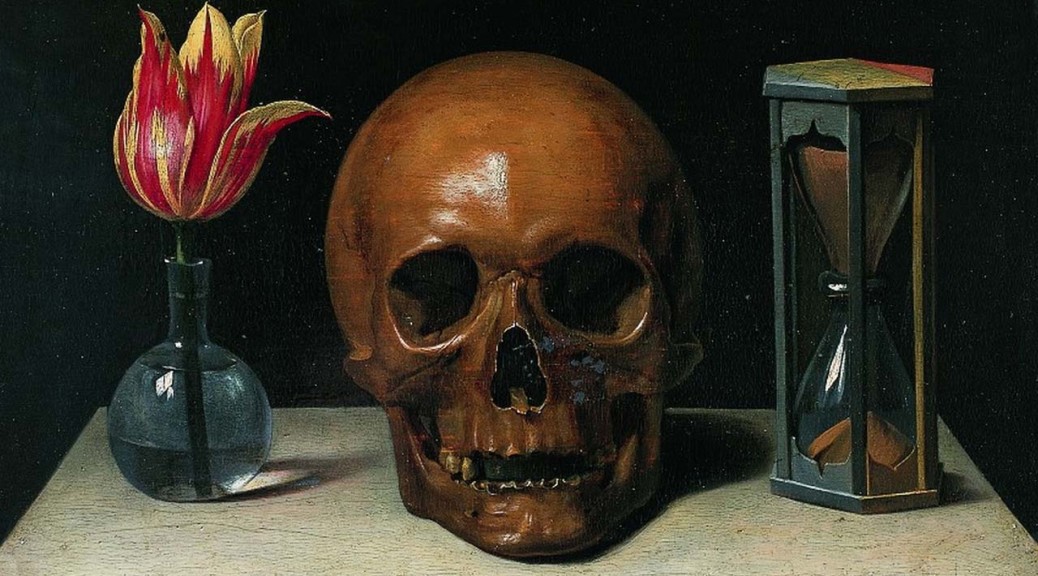
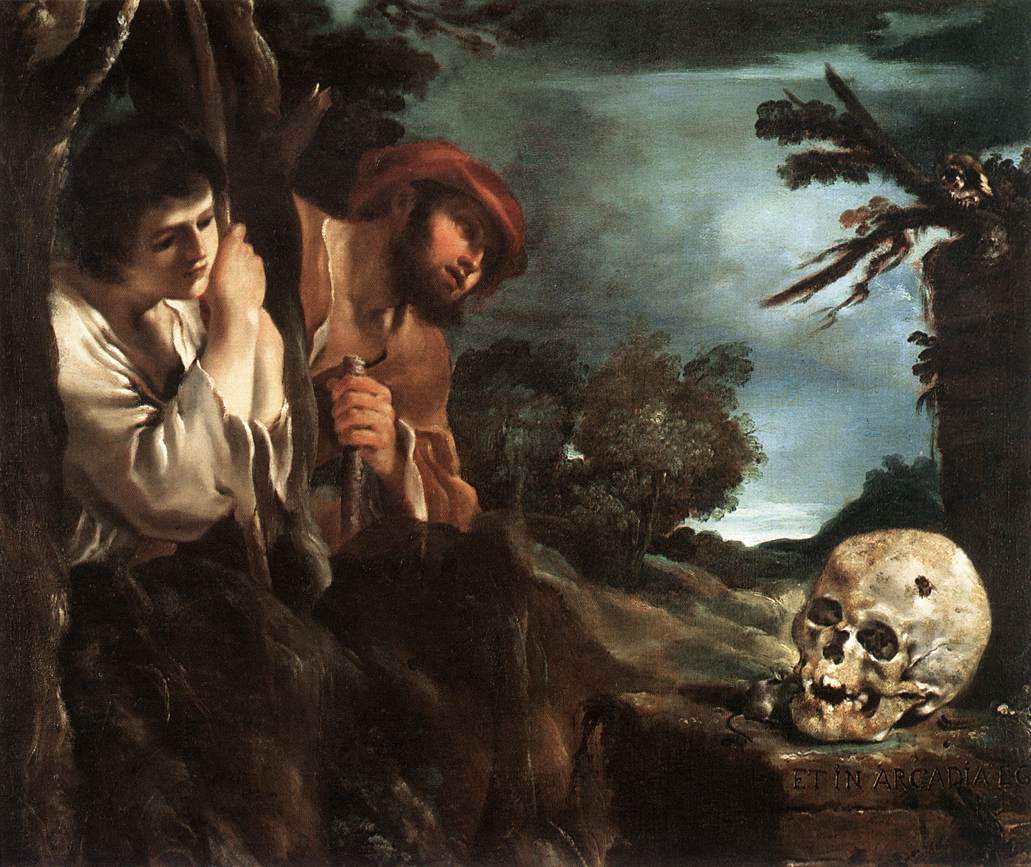
Et in Arcadia Ego. Guercino. 1618-22. Galleria Nazionale d’Arte Antica, Rome. Via wikimedia.
A memento mori at 3:38.

Nicholas Poussin, Et in Arcadia Ego, 1627. via wikipedia.
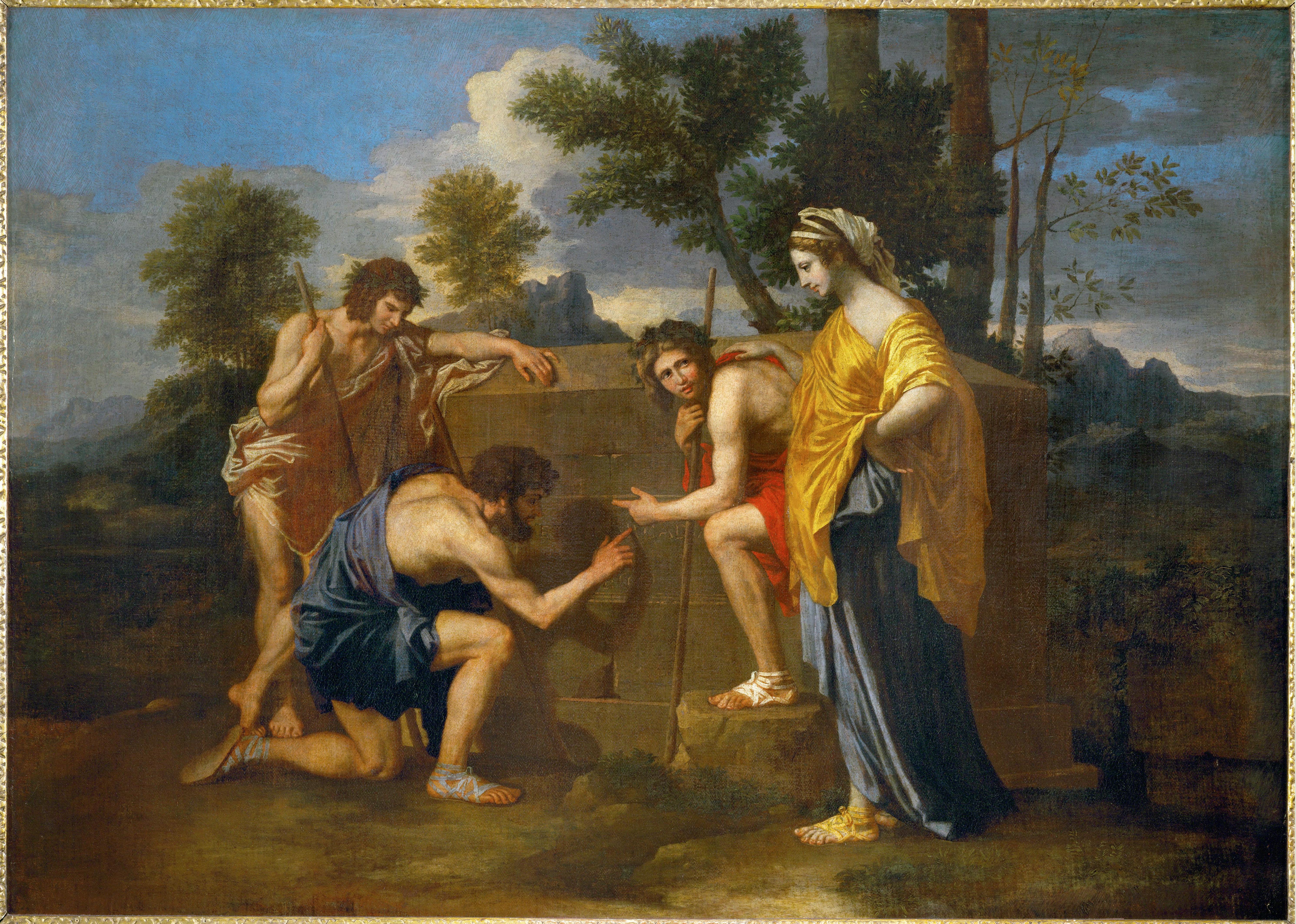
Nicolas Poussin. Et in Arcadia ego (1637-1638). Via wikimedia.
Interpretation of the phrase and paintings:
“The most important difference between the two versions is that in the latter version, one of the two shepherds recognizes the shadow of his companion on the tomb and circumscribes the silhouette with his finger. According to an ancient tradition (see Pliny the Elder, nat. Hist. XXXV 5, 15), this is the moment in which the art of painting is first discovered. Thus, the shepherd’s shadow is the first image in art history. But the shadow on the tomb is also a symbol of death (in the first version symbolized by a skull on the top of the tomb). The meaning of this highly intricate composition seems to be that, from prehistory onward, the discovery of art has been the creative response of humankind to the shocking discovery of mortality. Thus, death’s claim to rule even Arcadia is challenged by art […] In the face of death, art’s duty—indeed, her raison d’être—is to recall absent loved ones, console anxieties, evoke and reconcile conflicting emotions, surmount isolation, and facilitate the expression of the unutterable.” * Wikipedia.
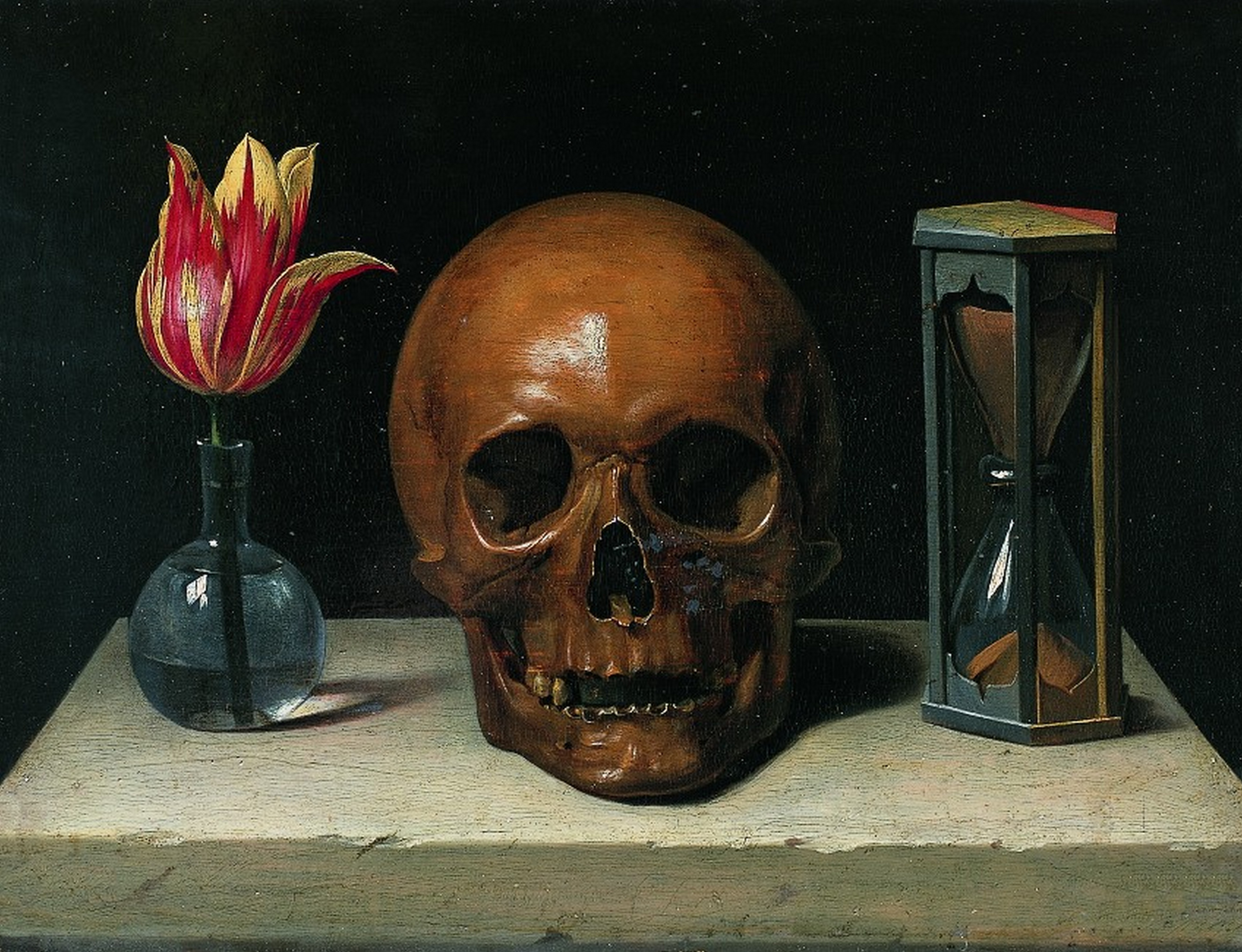
Philippe de Champaigne. Vanitas (c. 1671) Life, Death, and Time.
See memento mori and vanitas.

Raising Lazarus, Oil on Copper Plate, 1875, Carl Heinrich Bloch. Via wikimedia.
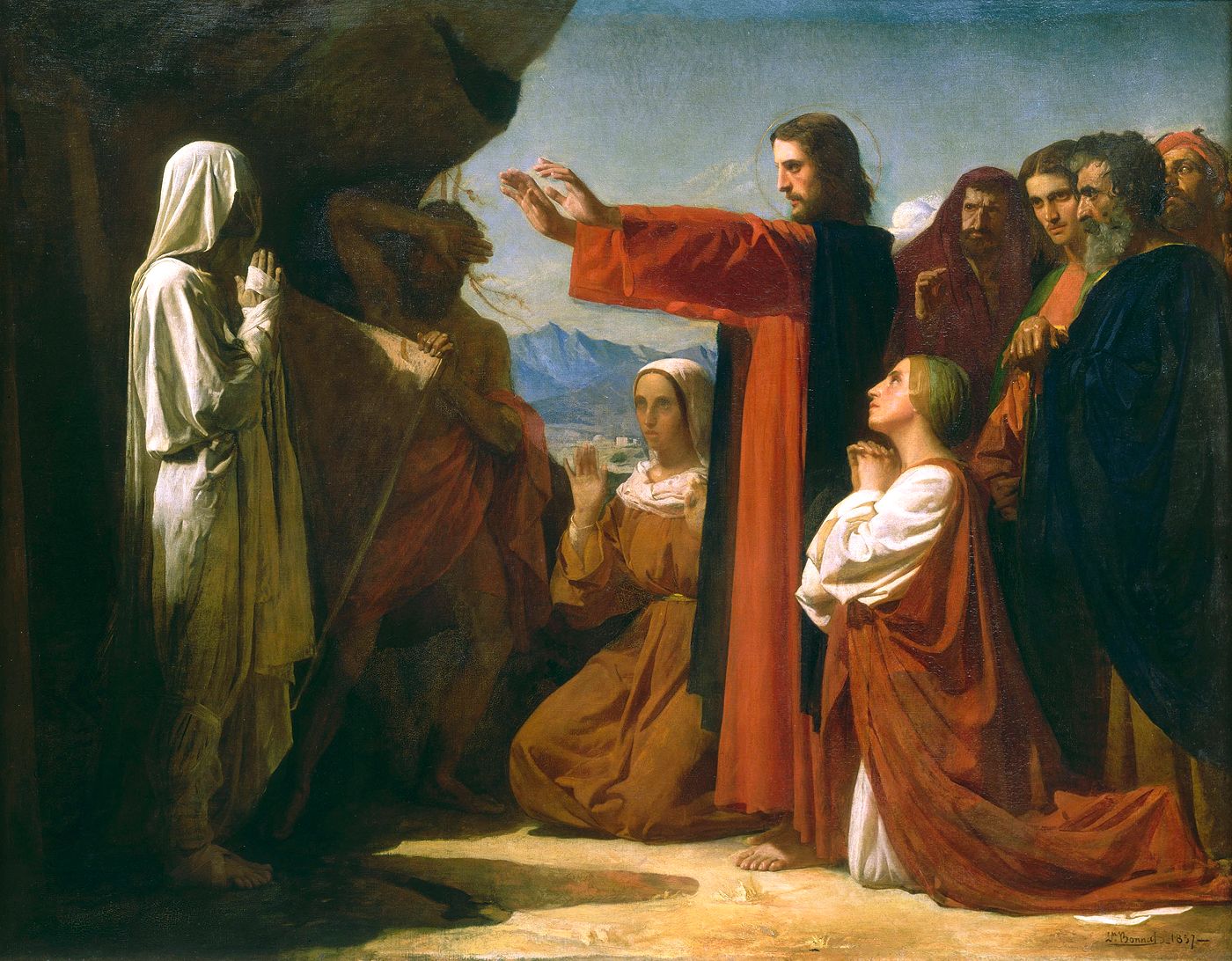
The Raising of Lazarus, 1857, Léon Joseph Florentin Bonnat. Via wikimedia.
See Ecologues of Virgil.
See Erwin Panofsky
See Web Gallery of Art.
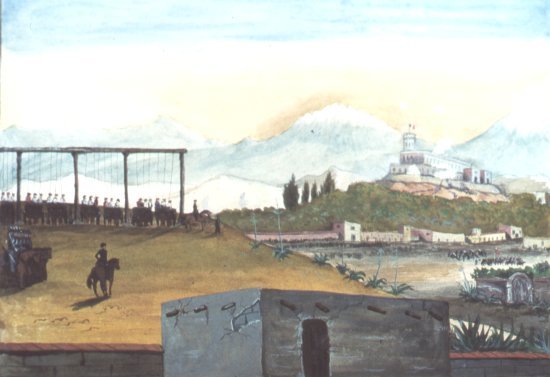
The mass hanging of San Patricios via wikimedia.
Read Samuel Chamberlain‘s My Confession: Recollections of a Rogue.
—–
Et In Arcadia Ego is the name the Judge has given to his rifle in Blood Meridian. In the book, the Judge copies and destroys an ancient rock painting he finds while crossing the desert.
——
On the origin of painting and drawing through shadow. Blog.
——
*the source of the interpretation doesn’t appear in Wikipedia unless it comes from the German book Picasso und die christliche Ikonographie. Mutterbeziehung und künstliches Selbstverständnis (2003) by . (Picasso and the Christian iconography. Mother relationship and artificial self-image).
Zen and Mahayana Buddhism influence.
Imperfection. Simplicity. Transience. Economy. Asymmetry. As opposed to western Apollonian aesthetics.
Three marks of Existence.
Emptiness. Impermanence. suffering.
Wabi sabi style music: http://en.m.wikipedia.org/wiki/File:Shikanotoone_new.ogg
Desolation and solitude.
http://en.m.wikipedia.org/wiki/Zen_garden
Read essay In Praise of Shadows by Tanizaki.
http://blog.lib.umn.edu/ali/2010ema8600/tanizaki_in%20praise%20of%20shadows.pdf
see
mono no aware http://en.m.wikipedia.org/wiki/Mono_no_aware
Found it while listening to The Man In The High Castle.
http://en.m.wikipedia.org/wiki/Wabi-sabi
by simon coffee